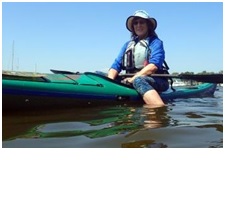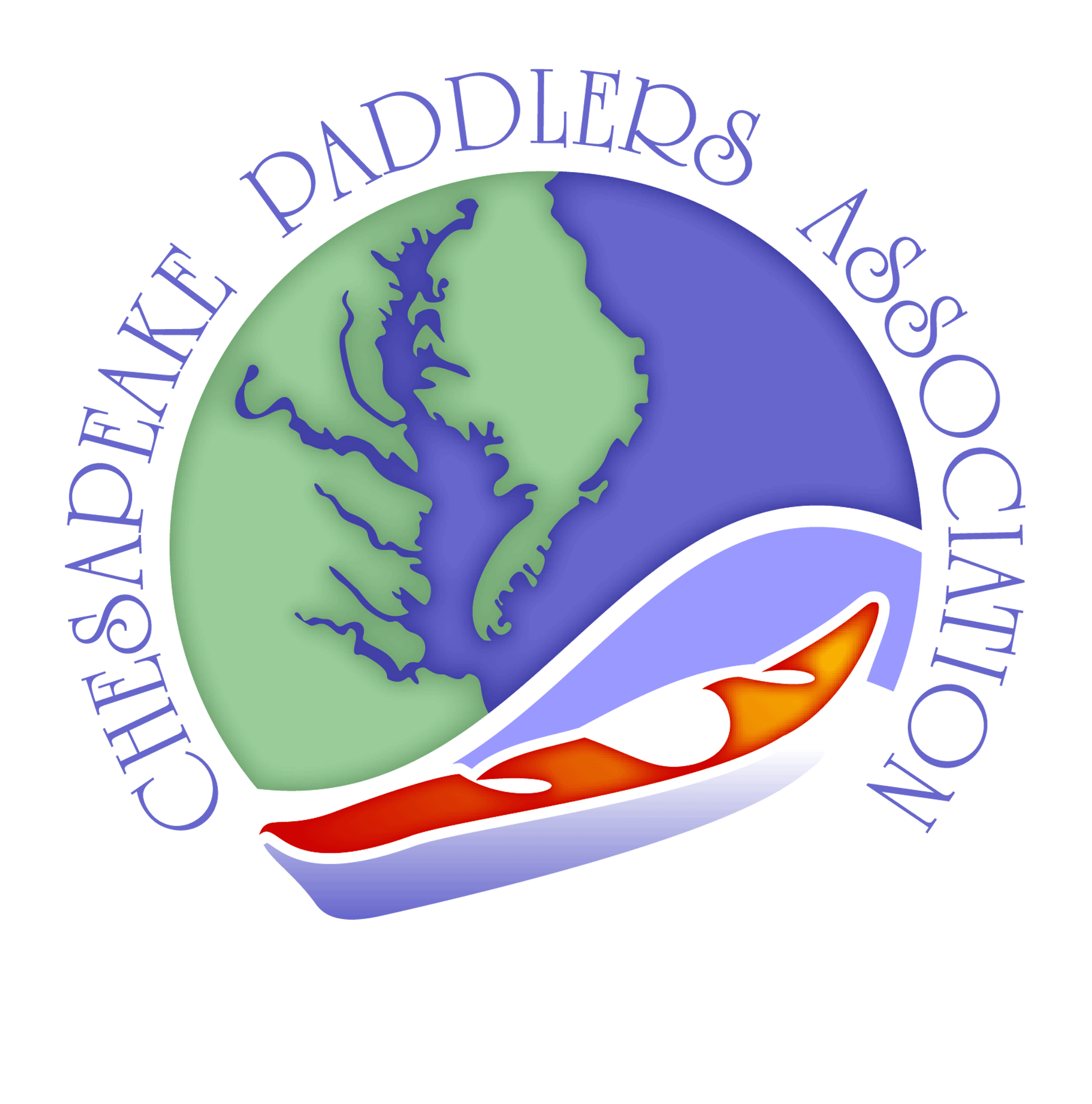By Paula Hubbard
In the last newsletter we learned about using NOAA for tidal data to help plan a paddling trip. In this column we will explore currents. Currents can be a challenge when we paddle, they can assist or make paddling a planned route impossible.
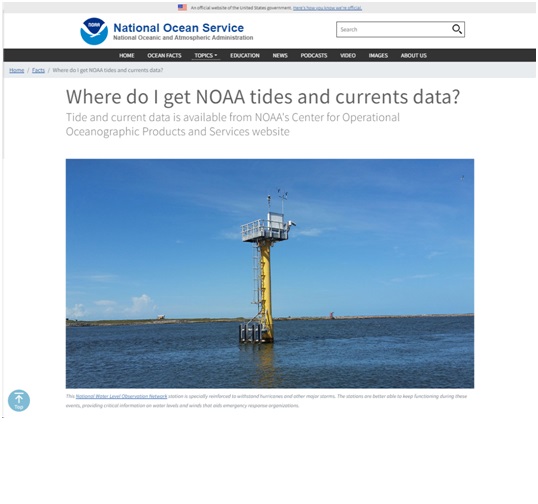
Learn about Currents
NOAA provides a tutorial on currents (https://oceanservice.noaa.gov/education/tutorial_currents/welcome.html) that is very detailed. To summarize, currents describe the horizontal movement of water across the surface of the earth. We have two basic types of currents.
Some currents are caused by the movement of water from a higher elevation to a lower elevation and is based on gravity. This is typical of the currents seen in rivers or streams. River currents are frequently measured by volume, for example cubic feet per second. The actual velocity or speed of the current will depend on several factors including the width and depth of the river which can vary significantly and the steepness of the vertical drop. Remember that water must move more rapidly when flowing through a constriction either horizontal (narrowing of the river) or vertical (changes in depth).
Ocean currents are caused by several factors. Tidal currents are driven by the changes in water level caused by gravitation forces of the sun and moon on the oceans. Tidal currents are what we see when paddling in bays, estuaries and along the coast. These are the only currents that can follow a regular pattern and can be predicted. A second factor driving the motion of water is wind. Winds create movement of water at or near the surface. These currents are localized and can be a significant factor when kayaking. The third factor in generation of ocean currents is driven by different densities of water called thermohaline (thermo for temperature, haling for salinity) circulation. These factors are the cause of the deep ocean currents such as the Gulf Stream.
Paddling in Currents
I would rather paddle with a 1 knot current than paddle against it. I hear trip leaders looking at current charts and saying it’s only a 1 knot current, but consider what a 1 knot current does. Paddling against the current the typical paddler at a paddling speed of 3 knots will cover only two nautical miles in an hour instead of three. To complete a 12 nm paddle all against that current will take six hours instead of four. If you were paddling with the current you would cover that same 12 nm paddle in three hours.
When crossing current, if you cross a 1 knot current the same paddler will be pushed with the current 1 mile for every 3 miles they cross. Paddling and allowing the current to push you with it will add 1 mile to a 3 mile crossing. Even when using ferry angles, some energy will be expended going against the current
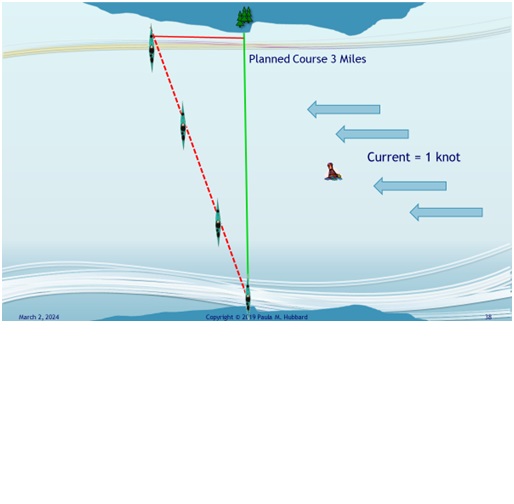
When paddling in the real world, we are not paddling against, with or across constant current. There are many other factors involved. So how can we predict where we will have currents and how that current will affect us.
Predicting Currents
NOAA provides current predictions on their web site. https://tidesandcurrents.noaa.gov/currents_info.html. Look for the Tides and Currents pages > Products > Currents. From here you can go to the Current Predictions page. From here you can select the region and browse through the current stations, search for a station if you know the name, or select the map to find a station.
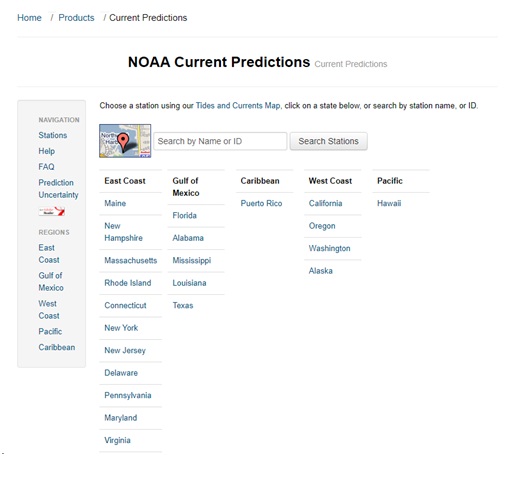
I will be using Woods Hole in Massachusetts as an example. This is an area where there are significant currents that can be very confusing. It’s also a beautiful place to paddle. It’s helpful to get an overview of the area. The red rectangle is the area we will be looking at.
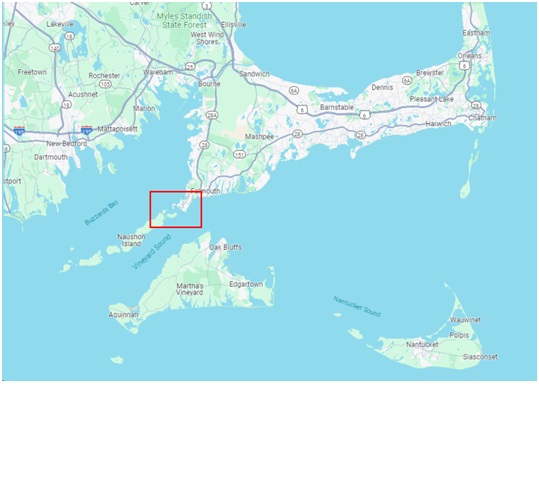
First, I selected Massachusetts and searched for Woods Hole. Here are the predictions for March 2. This page gives a lot of information. There is a graph of the current predictions, with 0 (slack being in the middle of the vertical axis. Flood currents are measured as positive numbers, Ebb currents are negative numbers. There is station information listed including the depth at which currents are measured, the latitude and longitude of the station (in degrees decimal). Finally, a very important piece of information is the mean direction of the ebb and flood.
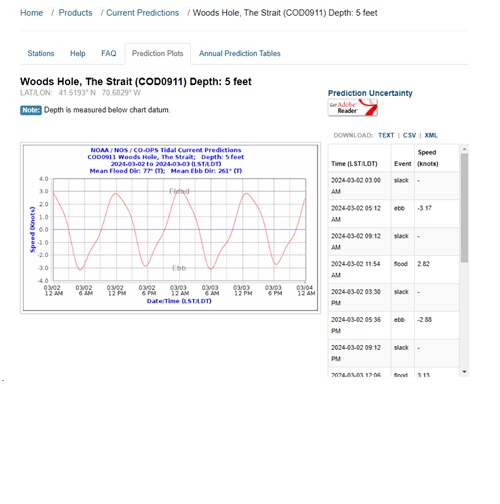
When looking at the overview map of the area, I originally thought that the flood would be moving from Vineyard and Nantucket Sound into Buzzards Bay, and conversely the ebb would be moving from Buzzards Bay out into Vineyard and Nantucket Sound, but in reality, it is the opposite. Without paying attention to the direction of the current, you could find that you are unexpectantly fighting significant current.
What makes predicting currents so challenging in this are is the presence of many islands and bays with narrow channels between. There is also the Cape Cod Canal that connects Buzzards Bay and Massachusetts Bay.
Local Factors that Affect Currents
While the NOAA current predictions are helpful, they are intended to provide information for commercial shipping, ferries, etc. and not kayakers. The current stations tend to be located in channels and in areas where there is a high volume of commercial boat traffic. How can we predict currents in the places we actually paddle?
First, look at the tide data. A larger tidal range will produce more current. For example, Spring tides generally result in more current. In places where there is a large tidal range, for example, Tybee Island in Georgia, there will be generally much stronger currents. This is also true when paddling in Maine.
In tidal rivers or where rivers open into bays or the ocean, there may be factors such as river flows that will impact currents. In some cases such as heavy rains, or rivers in flood state, the river flow may overpower the effects of the tides.
Next look at your charts for any constrictions or narrowing of the places you paddle. This also includes identifying changes in depth. Water moves faster in these areas. Inlets and channels between islands are also places where currents may be stronger. Narrow inlets can also cause water to back up making the timing of slack to be offset from high or low tide. This occurs because the same volume of water must go through the constriction so it must increase speed. This is known as the venturi effect or using Bernoulli’s Principle
Finally, look points, and other obstructions that may cause formation of eddies. Essentially obstructions are small constrictions. Water will flow more rapidly around the obstacle and then create an eddy or counter current behind it.
The best way to get to know local currents is to paddle with people who know the area. Learn by observation. Pay attention to changes in water texture and how your boat reacts as you paddle.
Eddies
Eddies are your friend when paddling against current. Eddies are caused by water accelerating around the obstruction and dragging water from behind the obstacle along. That water must be replaced and causing a counter current where the water is moving in the opposite direction from the main current. Even small indentations in the shoreline can cause micro eddies and make paddling against the current much easier.
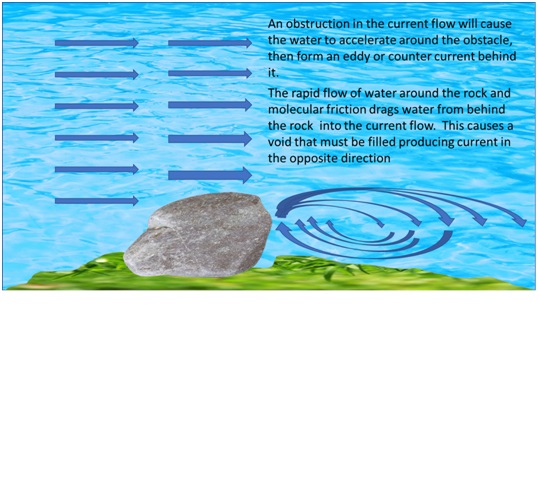
Look at the texture of the water to identify an eddy. The main current may be more turbulent, the eddy is typically smoother. Eddy lines may be very distinct, narrow and clean. This is typical at the top of the eddy, closest to the obstruction. As you get farther from the obstruction, the eddy widens and there may appear to be small whirlpools and a less distinct line. 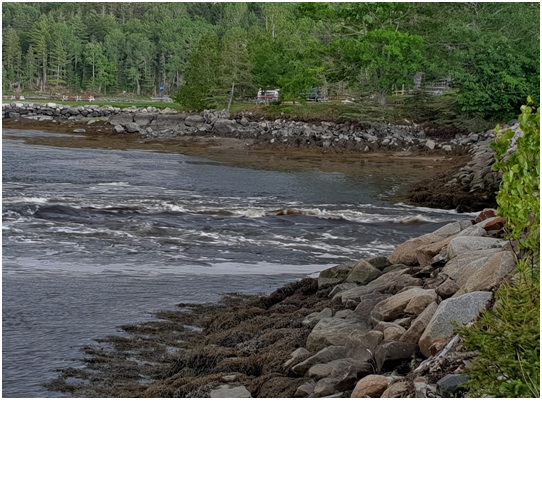
A narrow bridge opening forms a tide race with an eddy on either side. Notice the difference in the texture of the water
Currents are complicated. There are many factors and some I have just touched upon.
Happy Paddling.
Paula Hubbard
